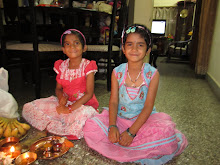This is perhaps the last grassland in the Silicon City of Bangalore. Once known for its abundance greenery, Bangalore
But what many people do not know is that Bannerghatta is not the only wildlife sanctuary in Bangalore There is another but little known pocket of green on the other side of Bangalore and this is almost opposite in distance and direction to Bannerghatta. But unlike Bannerghatta, this is not all that well-known.
This patch of forest is the last surviving grasslands of Bangalore
It is called the Byalkere Peacock Reserve and it adjoins the huge Hesaraghatta lake. This reserve forest is on the road to Hesaraghatta from MS Palya.
The Hesarghatta lake, Hesarghatta village and the peacock reserve are home to some endemic species of wildlife such as the Slender Loris which in Kannada is called “Kadu Papa”. Zoologists claims that there are more than 20 sub-species of these animals living here but spotting them is hard as the animals are elusive creatures and rarely make their presence felt.
The Slender Loris is on the list of endangered species. They are native to India and Sri Lanka
The grasslands and the adjoining dry lake bed are home to endangered birds like short tailed snake eagle which comes under schedule -iv of endangered species, all species of harriers slender loris and lesser Florian. Orinthologists have counted no less than 133 types of birds, five species of reptiles, mammals and several types of plant species in the grasslands of Byalkere and Hesarghatta.
It is really a rare and unforgettable sight to watch so many peacocks so close to human habitation. The only pother known peacock reserve is in Adichunchangiri which is a fair distance away.
This could perhaps be the only known peacock reserve so near a city. The peacocks seem oblivious of the visitors and their sweet melodious calls carry for long distances.
Apart from peacocks, you can spot Indian Robin, Egrets, Brahmini Kite, Doves, Kingfishers, Purple Rumped Sunbird, common Mynas, Bulbul and even Black Kites.
You can also see Marsh harriers, Indian roller, barn swallow, kestrel and Siberian stone chats.
Since it is a reserve forest, permission is restricted. You have to approach the Forest Department for permission. Check out with the Forest Department at Aranya Bhavan , Malleswaram, for more details and also permission.
Byalkere and Hesaraghatta are in the north western part of Bangalore
Join the Yeshwanthpur circle and take the road to Mathikere. Go past the flyover to BEL circle and from Jalahalli East join the road to Vinayak Nagar. Travel on the same road to Dodda Byalkere and Hesarghatta.
Another approach is from Tumkur road. Travel along the road till you see a sign pointing to Hesarghatta.
The Nritya Grama or dance village of Protima Bedi Bangalore
